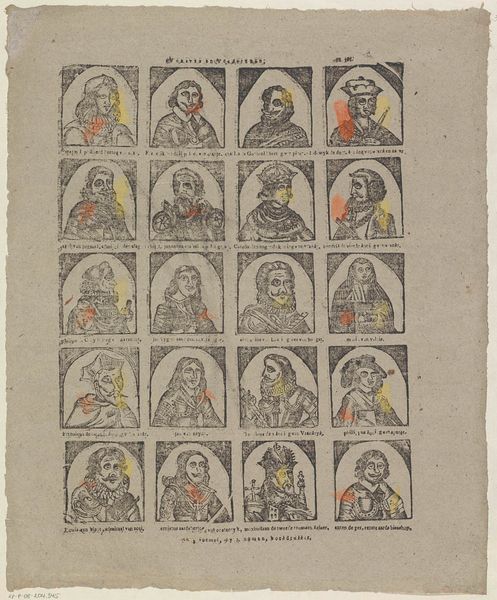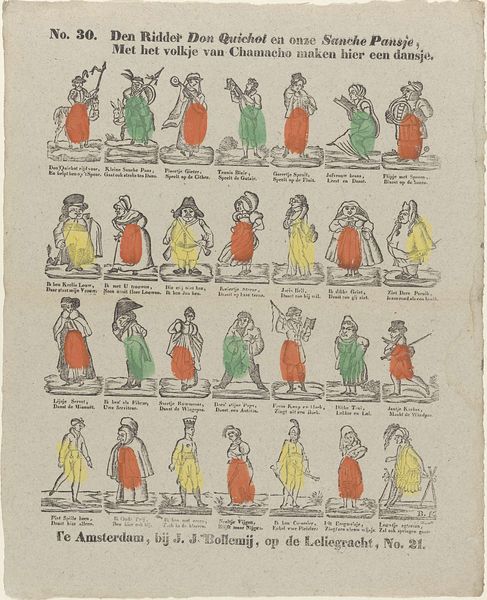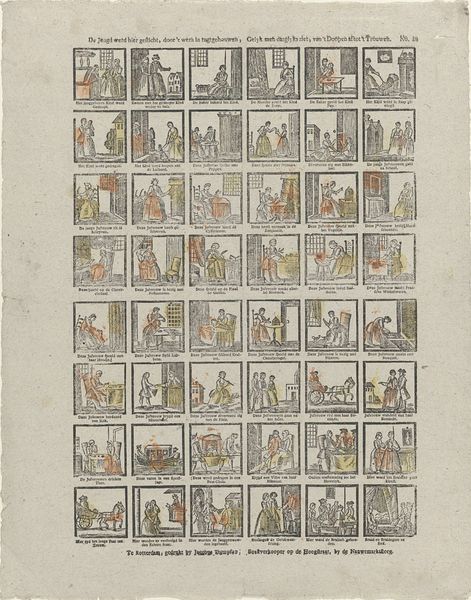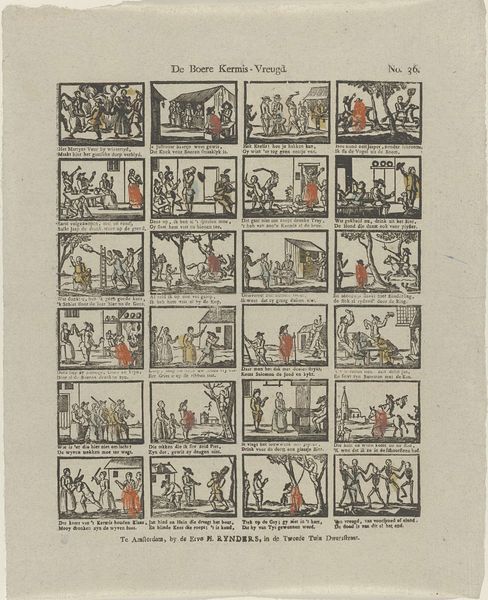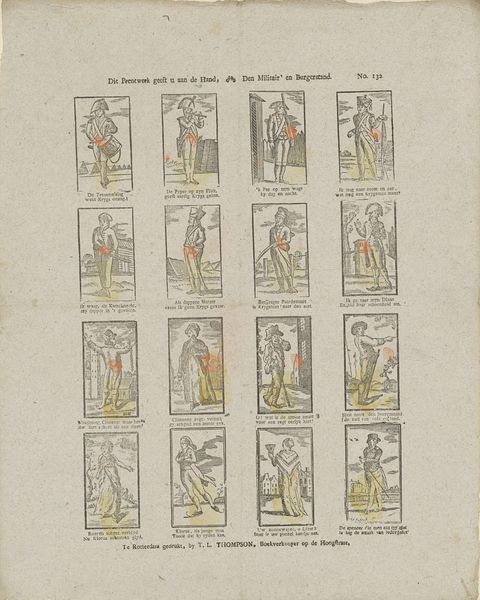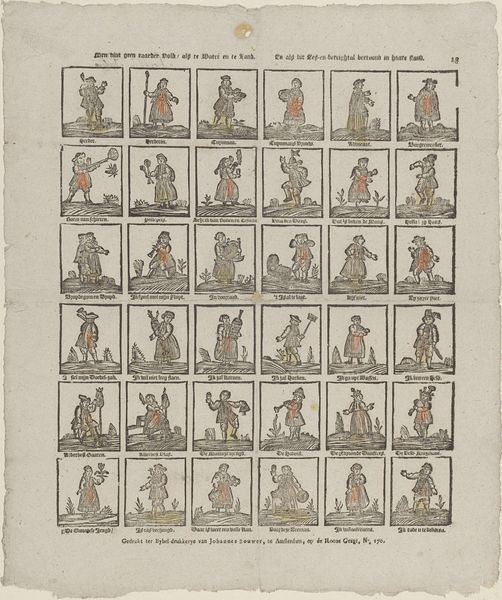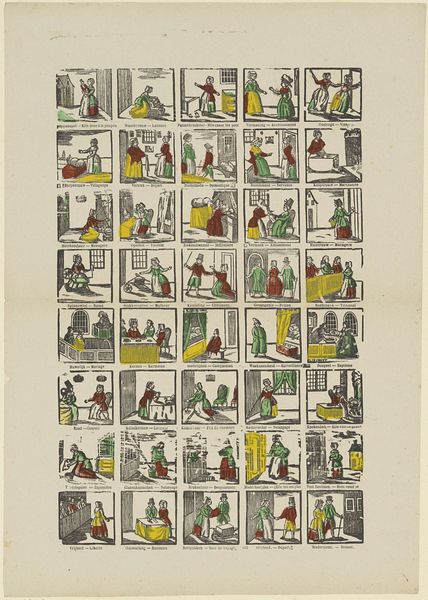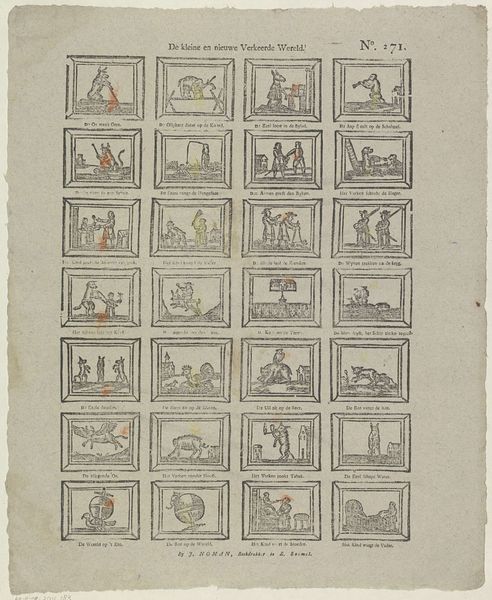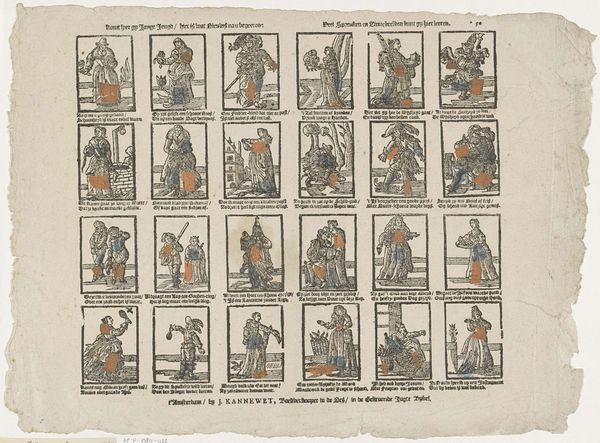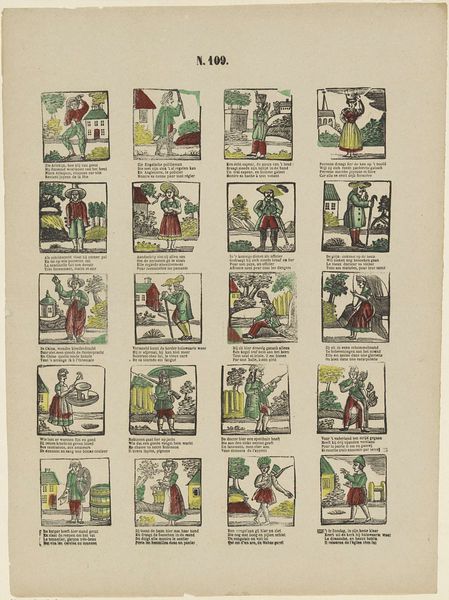
#
aged paper
#
toned paper
#
old engraving style
#
personal sketchbook
#
pen and pencil
#
sketchbook drawing
#
watercolour illustration
#
storyboard and sketchbook work
#
cartoon carciture
#
sketchbook art
Dimensions: height 299 mm, width 380 mm
Copyright: Rijks Museum: Open Domain
Curator: This delicate sheet, titled "Bidprentjes," from sometime between 1827 and 1894 and attributed to M. Hemeleers-van Houter, presents a fascinating glimpse into popular religious imagery. Editor: It looks like a carefully designed printing sheet; the registration isn't perfect, but these vivid splashes of pink and yellow amidst the sepia tones create a strong overall impact. The material feel is immediately tactile. Curator: Absolutely. These are indeed Catholic Holy cards, mass-produced devotional images featuring various saints and religious figures. Each little portrait is framed with architectural details reminiscent of tiny chapels. In their time, such cards provided a tangible, material link to faith and spiritual guidance for those who kept and revered them. Think about who was commissioning, manufacturing, distributing and buying these cards. Editor: And consider the repetitive labor required to make them! Note the uniformity, despite the hand-coloring. We're looking at an object produced in multiple to reinforce religious adherence to both doctrine and tradition. What materials went into the cards’ creation and what were their sources and cost? Curator: Beyond the artistry and material process, the standardization in imagery is interesting too. The very choice of saints shown here - the imagery, in its essence, seeks to both comfort and impose specific ideals for that society’s construction of female purity and sanctity or ideal masculinity. Consider too that this society would mostly exclude these genders. Editor: Exactly. We must investigate the economic factors at play; who would be more inclined to spend their money on this sort of item rather than another? Curator: Well, I find myself contemplating how an object like this helped reinforce and solidify religious identity in daily life. They're simple tools of faith that helped people shape their existence around that faith in the early years of the Industrial Revolution. Editor: A testament to the power of printed materials to distribute not only information but belief, faith, and social norms. It's a beautiful reminder of the deep ties between belief systems and the labor involved in producing the artifacts connected to those beliefs. Curator: Ultimately, “Bidprentjes” allows us to glimpse into the everyday spirituality and cultural values of its time. Editor: A material record of faith’s persistent, evolving presence across society’s diverse members.
Comments
No comments
Be the first to comment and join the conversation on the ultimate creative platform.
